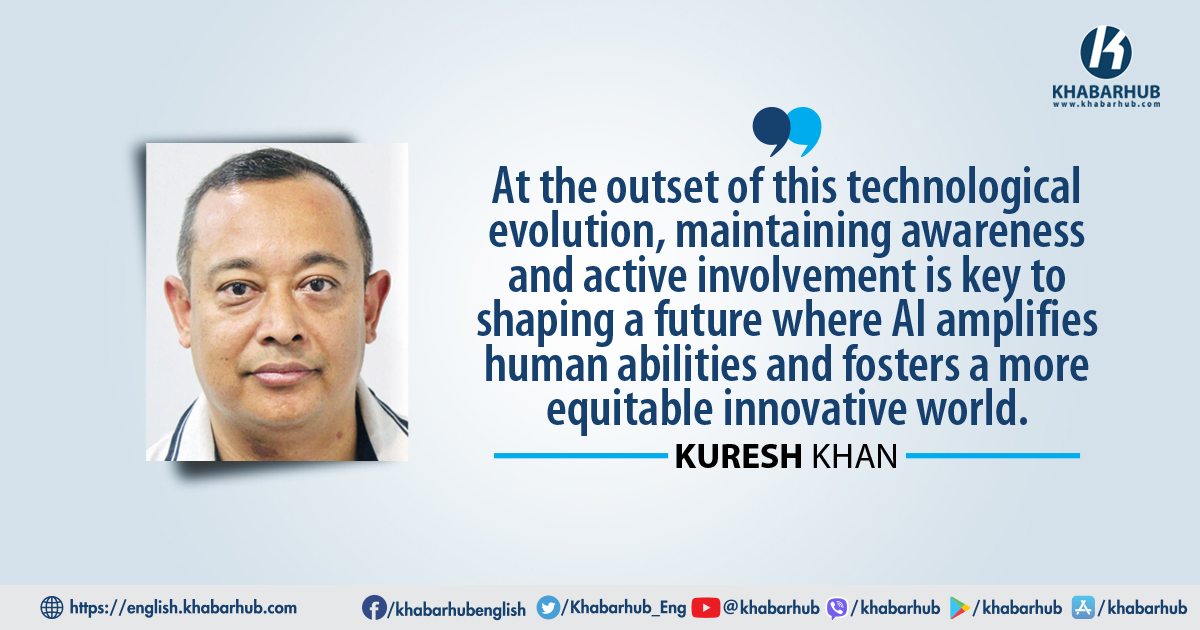In the modern era, Artificial Intelligence (AI) and automation have become pivotal forces driving transformation across all aspects of daily life and diverse industries.
From coding and medical research to space travel and infrastructure development, the influence of artificial intelligence and automation has fundamentally altered the structure of society.
This narrative delves deep into these technologies current and future implications, exploring their benefits, challenges, and profound effects on the workforce and human activities.
What is Artificial Intelligence (AI) and Automation?
Artificial Intelligence (AI) equips machines and software to execute functions traditionally requiring human cognition, including speech recognition, decision-making, and visual perception.
These AI systems improve as they learn from data and experience through algorithms.
Automation, closely linked with AI, uses technology to execute tasks autonomously, enhancing efficiency and enabling simple and complex processes to be carried out at speeds and scales beyond human capability. This synergy often results in reduced errors and increased productivity.
Key Components of AI:
Artificial Intelligence (AI) spans various technologies and approaches within its expansive domain. Below are some of the key components that form the building blocks of AI systems:
- Machine Learning (ML): At the heart of many AI applications, machine learning is a data analysis method that automates analytical model building.
ML systems can use algorithms that learn from data, making decisions based on data patterns without being explicitly programmed to perform specific tasks.
- Deep Learning: Deep learning, a distinct segment of machine learning, utilizes neural networks with multiple layers, usually three or more.
These networks mimic human decision processes through the use of algorithms and data. Deep learning is adept at identifying patterns within unstructured data like images and sounds.
- Neural Networks: Neural networks, which mimic the structure of the human brain, serve as the fundamental components of deep learning. They consist of interconnected nodes (neurons) that process and transmit signals through layers.
The complexity of these networks enables them to capture and represent complex patterns and relationships in the data.
- Cognitive Computing: This technology strives to imitate human cognitive operations in a digital context, employing automated algorithms that incorporate data mining, pattern recognition, and natural language processing to emulate brain functions.
- Natural Language Processing (NLP): NLP allows computers to understand, interpret, and generate human language in a valuable way. It merges computational linguistics, which involves rule-based modeling of human language, with statistical methods, machine learning, and deep learning models.
- Computer Vision: Computer vision technologies equip computers and systems to extract significant information from digital images, videos, and additional visual inputs. This technology allows for actions based on visual data interpretation, facilitating tasks from simple photo recognition to complex video analysis.
Impact of AI and Automation on Modern Life and Industry
Artificial intelligence (AI) and automation are transforming technology and changing the way tasks are performed in everyday life and across diverse sectors. This section explores how these technologies transform multiple sectors and what future advancements we might expect.
Workforce Transformation:
AI and automation are transforming the workforce, assuming control of routine tasks and liberating humans to handle more intricate responsibilities.
This shift is most evident in manufacturing and data processing. Still, it also impacts retail and customer service sectors, where AI-driven chatbots handle customer inquiries and complaints, allowing human employees to focus on more nuanced customer interactions.
Enhancements in Medical Research and Healthcare:
In healthcare, AI algorithms analyze vast arrays of data to assist in diagnosing diseases with higher accuracy than ever before. For instance, AI-driven imaging tools can detect abnormalities such as tumors much earlier than traditional methods.
AI is also used in personalized personalized medicine, where it helps tailor treatment plans to individual genetic profiles, improving outcomes.
Infrastructure Development and Engineering:
AI’s role in infrastructure and engineering is growing. AI systems are being used to monitor the structural health of bridges and buildings, predict maintenance, and optimize traffic flow in real-time. This technology enhances safety and significantly reduces costs associated with infrastructure management.
Advancements in Space Exploration:
AI is set to play a pivotal role in space exploration by processing data from space far more efficiently than humans. It aids in navigating spacecraft, analyzing space photographs, and even operating rovers on other planets, such as Mars, which can conduct experiments and gather data autonomously.
Revolutionizing Product Development and Research & Development (R&D)
AI accelerates the R&D process across various fields, including pharmaceuticals, automotive, and technology.
By simulating and predicting outcomes, AI reduces the need for physical prototypes, speeding up the innovation cycle and reducing costs.
For example, AI creates and tests virtual car models under various conditions in the automotive industry, leading to safer and more efficient vehicles.
Coding and Software Development:
AI tools are becoming integral to coding. They can write and review code, detect errors, and even optimizeoptimize existing code to improve efficiency. These tools are becoming essential for developers, enabling them to concentrate more on strategic activities instead of routine coding tasks.
AI at Work: The Impact of AI and Automation on Employment
With an overview of how pervasive AI and automation have become, let’s delve deeper into how these technologies precisely reshape employment across various industries.
Recent studies have shown that automation is poised to replace many traditional jobs, especially in industries such as manufacturing, transportation, and administrative support. A report by the World Economic Forum estimates that by 2025, automation will displace approximately 85 million jobs globally. However, it’s crucial to note that this displacement also comes with a transformation like work.
Job Displacement:
While some jobs are being phased out, AI and automation are also major job creators, and they are expected to generate about 97 million new jobs by 2025, according to the same World Economic Forum report. These new roles are often more specialized, requiring AI management, oversight, and implementation skills across various industries, including healthcare, IT, and customer service.
Shifts in Job Requirements:
The demand for advanced technical skills, such as programming and data analysis, is increasing.
Simultaneously, there’s a growing need for soft skills, including creative problem-solving and emotional intelligence, which are difficult to automate. This shift signifies a more hybrid workforce, where humans and machines collaborate.
The Dark Side of AI: Key Challenges in Artificial Intelligence
Artificial Intelligence (AI) transforms many sectors but faces significant challenges, including technical, ethical, legal, and managerial hurdles.
The “Black Box” problem is substantial and affects trust and accountability. This section explores these issues, providing key insights for developers, users, and regulators.
The Black Box Problem in AI Decision-Making
The “Black Box” problem in AI describes the opacity of complex AI algorithms, especially in machine learning and deep learning. The decision-making process in many AI systems needs to be more transparent, making it hard for users to understand or predict outcomes. This lack of clarity can affect:
- Accountability: It’s easier to assign responsibility for mistakes or adverse outcomes when it’s clear how decisions are made.
- Trust: Users may mistrust AI, particularly in critical areas like healthcare or autonomous vehicles.
Addressing the Issue:
Efforts to address the Black Box problem include developing explainable AI (XAI) technologies that aim to make the decision-making processes of AI systems more understandable and traceable for human operators.
These initiatives are crucial in sectors where understanding AI’s reasoning is essential for acceptance and ethical application.
Additional Challenges in AI Deployment
As AI technology progresses, its deployment encounters several significant hurdles. Understanding these challenges is essential for developers, policymakers, and users alike.
- Algorithm Bias: AI systems often reflect the biases in their training data, leading to potentially unfair decisions.
This is especially critical in sectors like recruitment, lending, and law enforcement, where such biases can significantly impact individuals’ lives.
- High Computing Power Requirements: Sophisticated AI applications demand extensive computational resources, making them costly and less sustainable. High energy requirements can limit scalability and raise environmental concerns.
- Integration Challenges: Adding AI into existing systems involves considerable technical and managerial changes. OrganizationsOrganizations may need to substantially modify their infrastructures, demanding significant time, money, and training. These changes can disrupt existing operations and necessitate major adjustments from staff and management.
- Legal and Ethical Concerns: AI deployment introduces complex legal issues concerning privacy, data protection, and liability.
As AI systems gain autonomy, ensuring compliance with legal and ethical standards is crucial but increasingly complicated.
Practical Strategies to Address AI Challenges
Addressing the complexities of AI involves specific actions that enhance its functionality and mitigate risks. Here’s how these strategies can be practically applied:
- Develop Problem-Solving Ability: Improving AI’s problem-solving skills can increase transparency and accountability, especially in complex processes like decision-making.
- Incorporate Knowledge Representation: Enhanced knowledge representation helps AI systems access diverse and accurate data, reducing biases and improving decision quality.
- Facilitate Planning: AI’s predictive capabilities can streamline the integration process in existing systems, foreseeing and mitigating potential disruptions.
- Allow Continuous Learning: Enabling AI to learn from feedback continuously refines its functions and reduces biases over time, adapting its responses based on real-world interactions.
- Encourage Social Intelligence: Socially intelligent AI can better understand and respond to human emotions, which is essential in customer service and healthcare applications.
- Promote Creativity: Creative AI can find innovative solutions to ethical and legal challenges and navigate complex regulations more effectively.
- Achieve General Intelligence: Pursuing AI with general intelligence allows systems to perform diverse intellectual tasks, understand the context, and make human-like judgments.
- Promote Synergy Between Humans and AI: Encouraging collaboration between humans and AI leverages the strengths of optimizing outcomes while maintaining sustainability and ethical standards.
In conclusion, the transformation brought by Artificial Intelligence (AI) and automation ranges from mundane activities to industrial processes, delivering notable efficiencies and possibilities.
However, grasping their capabilities and risks is vital for policymakers, business executives, and the general population.
Addressing the ethical, legal,and societal dilemmas of AI enables us to ethically harness its advantages and extend them to all segments of society.
At the outset of this technological evolution, maintaining awareness and active involvement is key to shaping a future where AI amplifies human abilities and fosters a more equitable innovative world.









Comment